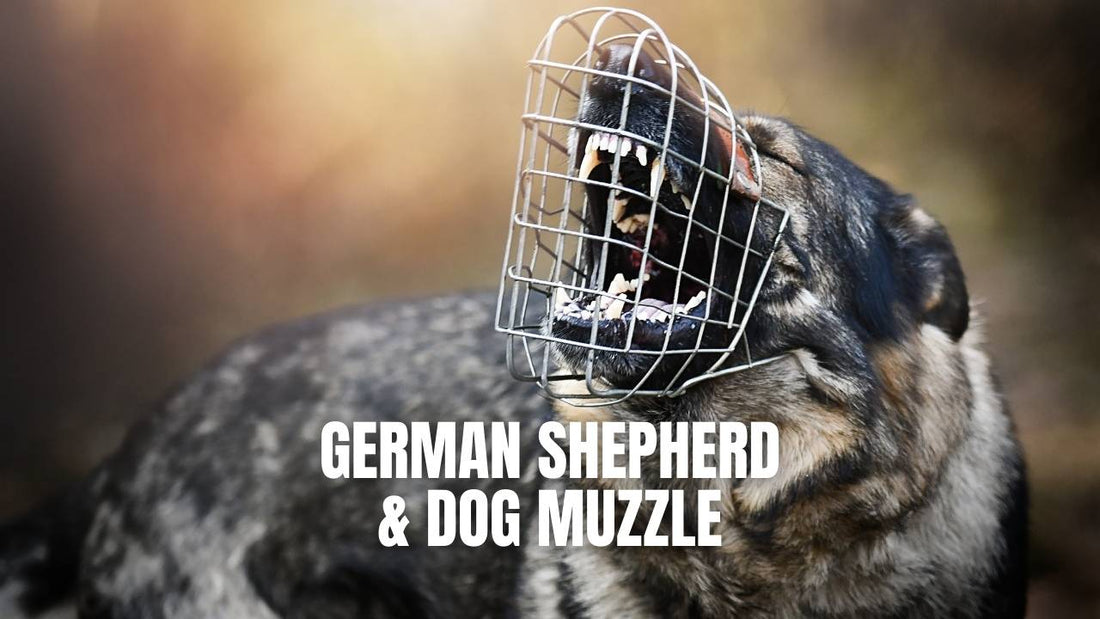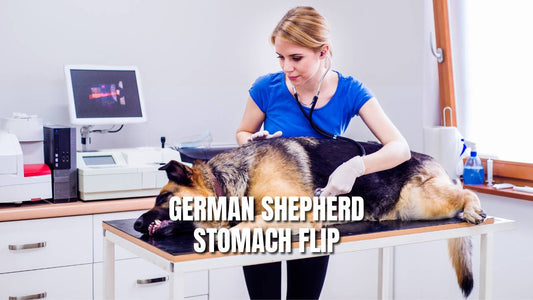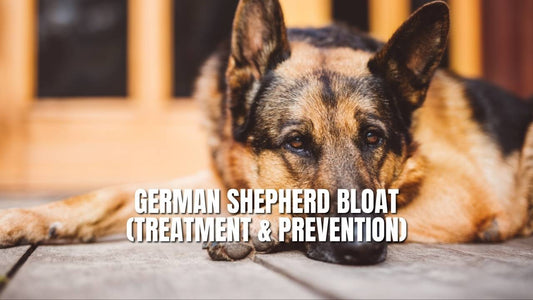What pictures do you have in your head when you see a German Shepherd dog wearing a muzzle? Do you think that this German Shepherd is a dangerous dog and that he may attack you, or do you think that dog muzzles are pure evil, or you're happy to see a responsible dog owner who is training his dog?
No matter what group of people you belong to, you are right. Dog muzzles can be a great training tool for German Shepherds will behavior problems, Also, in public places, dog muzzles are a great tool for the safety of the people around your dog, and your dog itself.
Unfortunately, dog muzzles sometimes can be bad or even dangerous for German Shepherd dogs. In this blog post, we'll cover everything that you need to know about dog muzzles. You will find out if you should use muzzles for your German Shepherd and if they are dangerous or not.
The history of dog muzzle
The popularity of dog muzzles started to grow back in the 1900s. As dogs became more and more popular as pets among people, the number of accidents (dog bites) also increased.
Medicine at that time was not as developed as it is today, and at that time, a large number of people died from dog bites due to communicable diseases such as tetanus, cellulitis, rabies, meningitis, and more.
One of the first dog muzzles was made from steel wire and leather.

They weren't nearly comfortable as today's dog muzzles, but they were more than useful. With the progress of the global industry, factories appeared that cared about the dogs and the quality of the products.
In 1939, dog muzzles appeared that looked much better, were made of better materials, and most importantly, these dog muzzles were more comfortable for dogs.

Photos from The Pet Historian.
Since then, many manufacturers have improved their products and thus created better and better quality product that has helped not only dog owners, but also the dogs themselves.
The benefits of dog muzzle for German Shepherd dogs
When you use dog muzzles properly, they can be a fascinating tool! Many people decide just to put the muzzle on their dog, without any previous dog training, and then problems arise.
If you want to muzzle your German Shepherd dog, you need to prepare them for that. Later in this article, we’ll mention how you can train your German Shepherd dog to wear a muzzle.
Here are a few advantages of dog muzzles and how to know when to use them.
1. Muzzles can be good for nervous German Shepherd dogs
A German Shepherd dog that is scared of people, loud noises, or any other stimulation may lunge, snarl, or attempt to bite you or passers-by.
It is almost necessary to always have a muzzle for your German Shepherd with you when you are in public places such as a park, market, shopping center, bus, or in any other public transport.

Also, German Shepherd dogs who are hurt may bite more frequently, especially if their owner or a veterinarian is treating them.
Make sure to muzzle your German Shepherd when you arrive at the vet station if your dog is nervous.
2. People may respect your German Shepherd's space if they wear muzzle
How many times have people petted, or tried to pet your German Shepherd without your permission? People could be enticed to pet an attractive dog in public if they see one. However, nervous dogs could interpret this as a danger and bite in response.
We believe that this isn’t okay and that our dogs deserve a private space, especially if they are nervous.
But, if your nervous dog wears a dog muzzle when he’s surrounded by people, there is less chance that someone will try to pet your dog.
People will assume that this dog is dangerous. Once they see a dog muzzle on the German Shepherd dog, they will see a dog muzzle as a big sign of NO.
3. Muzzles are a great tool for your German Shepherd dog when you introduce him to a new situation
You can never be sure how your German Shepherd dog will react when they are experiencing something for the first time.
Imagine that you’re trying to introduce your newborn to your nervous German Shepherd without a dog muzzle. If something gets wrong, the consequences can be really big.

Or, you’ve invited a new friend into your house, told him that your dog is friendly, and suddenly you see how your German Shepherd is trying to bite that person.
Safety comes first. No matter how much you love your dog and how good he is, he may just don't like a new person.
As the Houpt says:
“The muzzle won't make the dog worse or better, but it will protect the public”
4. Muzzle could make grooming easier
If your German Shepherd doesn’t like being groomed, then it’s a perfect time to start with muzzle training.
With just one wrong move, great chaos can ensue. Most dogs, including German Shepherds, are nervous when strangers are trying to trim their nails, clean their ears, etc.
Some German Shepherds are even nervous when their owners are trying to trim their nails! Teaching your dog to be comfortable in situations like this is crucial, but if you want to put a safety on the highest level, then we highly recommend you use a dog muzzle.
5. Travel without headache with your German Shepherd and dog muzzle
Did you know that many countries place restrictions on dog breeds that are considered dangerous? These restrictions may ban the sale of such breeds or mandate that the dogs be muzzled in public.
In some counties, you simply must put a dog muzzle if you are with your dog in public places.
If your dog is properly trained to wear a muzzle, you may be able to take him to more places, especially if their breed is seen to be more dangerous.
6. German Shepherds who wear muzzles are less likely to eat garbage
Some dogs tend to eat everything they come across on the ground, which puts them at risk of ingesting something poisonous or choking.
Also, if your German Shepherd tends to eat his poop or poops of other animals, dog muzzles can be a great training tool for that problem.
Discover more: Why does my German Shepherd dog eat poop?
A muzzle can prevent your dog from eating trash and keep him safe when out on walks if he has a history of doing so.
Most common misconception about dog muzzles
When fitted appropriately, a well-fitting muzzle shouldn't ever hurt or bother your German Shepherd dog. While your dog might not enjoy wearing a muzzle for the first time, some simple positive reinforcement training might help her get acclimated to her stylish new headgear.
As soon as a dog becomes used to wearing a correctly fitted basket muzzle, they may pant, drink water, and even eat goodies without any difficulty.
1. Muzzles are cruel
When fitted appropriately, a well-fitting muzzle shouldn't ever hurt or bother your German Shepherd dog. While your dog might not enjoy wearing a muzzle for the first time, some simple positive reinforcement training might help her get acclimated to her stylish new headgear.

As soon as a dog becomes used to wearing a correctly fitted basket muzzle, they may pant, drink water, and even eat goodies without any difficulty.
2. The German Shepherd who wears a muzzle has bitten someone in the past
It's not always the case that a German Shepherd dog wearing a muzzle has previously bitten someone. To protect their dog and others around them, many owners use muzzles as a preventative precaution. Because they are muzzled, many dogs in reality have never bitten anyone.
3. My German Shepherd dog is a friendly dog
Even the friendliest German Shepherd dogs can benefit from using muzzles since they are reliable aids for navigating dangerous circumstances.
Muzzles are great tools when you use them properly. Even if your dog is friendly, this does not mean that your dog should not have training muzzle training.
At some point in your life, you may have to put a muzzle on your dog. It is very important to be prepared for such experiences, so it is necessary to teach your German Shepherd dog to wear a muzzle.
4. Muzzles prevent only biting
Most people believe that muzzles are used to teach dogs not to bite, and this is not true. Dogs who enjoy eating things that aren't food might benefit greatly from muzzles.
German Shepherds who love to eat everything will benefit from dog muzzles the most. With the help of a dog muzzle, you can prevent them from eating a dead animal, garbage, or something toxic.
These misconceptions are most common among people who don’t know your dog or have any experience with dogs.
When should you not use a muzzle for your German Shepherd dog?
In addition to these benefits and misconceptions, there are times when you should never use a muzzle for your German Shepherd.
1. You’re trying to stop your German Shepherd from chewing things
If you had catch your German Shepherd chewing your favorite piece of shoes, or he destroyed your TV remote, a dog muzzle will not help you in this situation.
A muzzle should only be used while your German Shepherd dog is being watched and for brief periods.
Chewing comes with its nature. Instead of buying a dog muzzle, you need to invest your time training your dog or ask professional dog training for help.
2. You’re trying to stop your German Shepherd from barking
If you’re tired of listening to your German Shepherd how bark all day, then it’s time for training, not for the dog muzzle.
There is no such thing as a “no-bark muzzle”. If your German Shepherd barks all day, a muzzle won't help you.
You need to find a problem. If your German Shepherd barks all day, he is probably full of energy. Find a way to “empty his battery”. You can start with regular long walks (1-2 hours per day), running with your dog, dog sports, or simple dog games.
If you’re not sure why your German Shepherd barks all day, we highly suggest you ask professional dog training for help.
Frequently asked questions
If you still haven't found the answer to your question, we have prepared a FAQ section for you! Here you can find the most common questions German Shepherd owners ask about muzzles.
How do you put a German Shepherd muzzle on?
If you introduce a dog muzzle to your German Shepherd under a low-stress situation, use tasty treats, and be patient, chances are good that your German shepherd will not object to wearing a muzzle.
We prepared for your a step-by-step process on how to teach your German Shepherd to wear a muzzle:
Day 1: let him just sniff the muzzle. German Shepherds and all dogs generally get to know their surroundings best when they can sniff.
Day 2: Put the muzzle to his nose. Treat. Continue till he acknowledges that the muzzle appears to be genuinely interesting.
Day 3: in one hand hold his muzzle, in the other hand a tasty treat. Place the treat outside the muzzle, so that he needs to put his nose inside the muzzle to get the treat. Continue until it becomes second nature.
Day 4: Give him a reward while gently placing the muzzle over his nose. Take off the muzzle right away. Several times, repeat.
Day 5: Put the muzzle on, then buckle it. Treat. Take out right away. A few times, repeat.
Day 6: Put on the muzzle, buckle it, then slowly count to five. Treat. Take the muzzle off.
Day 7: Increase the time the muzzle is on slowly after each application. Hold the collar of your German Shepherd and reward him for a good job.
Do muzzles make German Shepherd calmer?
Dog muzzles can make your German Shepherd calmer in some situations, but only if you have trained your dog to wear a muzzle. If you put a dog muzzle on a German Shepherd without any previous training, you'll make the situation even worse. Never use a muzzle as a punishment.
Once you train your German Shepherd to wear a muzzle, the muzzle will become unnoticeable and completely normal for your dog. The key to success is training and patience. If you want to teach your German Shepherd to wear a muzzle, follow our process of 7 days which we mentioned a few moments ago.
Should I muzzle my German Shepherd puppy?
If your German Shepherd puppy is aggressive or nervous, and/or has bitten another dog or a person in the past, you can, and you must use a muzzle for your German Shepherd puppy. If your GSD puppy has behavior problems, such as chewing things or barking, you shouldn't use a muzzle to stop that.
For how long German Shepherds can wear muzzles?
If you are with your German Shepherd in public places such as a market, park, or public transport, your dog should not wear a muzzle for longer than one hour. If you can't finish all tasks in under one hour, make a short 5-minute break, and give some time your German Shepherd to rest from wearing a dog muzzle.
On the other hand, if you train your German Shepherd for the first time to wear a muzzle, then you can start with 5-10 minutes of training per day, and later, you can start increasing the time once he becomes comfortable with the dog muzzle.
Start with the muzzle training in the right way
If you want to teach your German Shepherd how to wear a muzzle, then this video is for you! You'll learn about different types of dog muzzles, and how to choose the best muzzle for your dog.
Conclusion
Most dog owners and other people believe that muzzles are pure evil, but in fact, when you use them properly, a dog muzzle can be a great training tool.
Most people think muzzles are bad for dogs because of misuse.
Irresponsible dog owners prefer to put on a muzzle and leave it on the dog all day instead of training or doing some activity with them.
You should never use a muzzle to punish your German Shepherd. Never.
With training and a little bit of patience, you can train your dog to wear a muzzle, and once you teach your dog to wear a muzzle, this will be a life-changing experience for you and your dog.
If you don’t know where to start, we highly recommend you ask for professional help from dog trainers.
We hope that this article helped you to better realize that dog muzzles are actually a great training tool. People are usually the biggest problem.
Every object on this planet can be dangerous if you give him to the wrong person.
Use a dog muzzle only for good, and we guarantee you that your German Shepherd will never have a problem wearing it.




